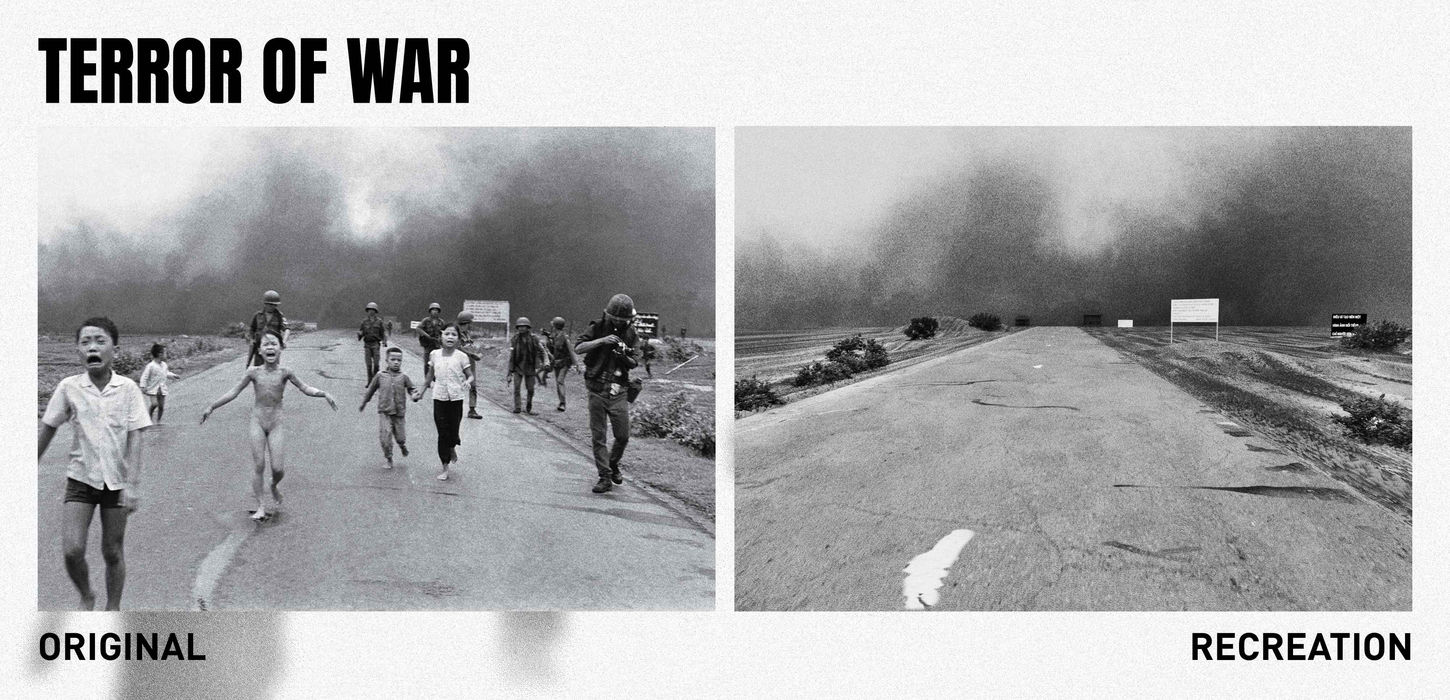
no body.
brief.
We had to create a short book exploring a subject of our choice around the topic of creativity and creation. The only instruction was that all the content (pictures and text) had to be ours.
type of work.
School work
Print, 3D
Have you ever wondered what makes an image impacting, to the point of persisting through time and collective memory? Is it the setting that captivates us? The people who inhabit it? The meticulous composition? Or just the photographer’s skill who managed to captured the essence of the moment? I had been asking myself these questions for a few weeks, without being able to get them out of my mind.
As I wandered through an art exhibition that recreated paper scenes stripped of all human life, the thought struck me: what would famous historical photographs look like if all their protagonists were removed, leaving an empty canvas for the viewer’s imagination to roam freely? And most importantly, can a famous photograph retain its meaning, impact and power when stripped of its main characters?








don't be shy.
Get in touch at eliott.davi@gmail.com
or on instagram @eliottdavi.jpeg
In this piece, aptly named “NO BODY”, I recreated, with a little help from 3D software, a collection of famous photographs with a subtle twist: all the people in the original photographs are gone. How would Winston Churchill’s 1941 portrait feel if there was just an empty chair in the bottom left-hand corner of an otherwise unremarkable shot? Would all the history, meaning and significance be lost? Would “Lunch Atop a Skyscraper” still be worth photographing if the group enjoying their risky break was removed?
By deleting the familiar figures that so often seize our attention, we are compelled to explore the subtleties of the scene, the architectural elements, the lighting, and the underlying narratives woven into these historical moments.










